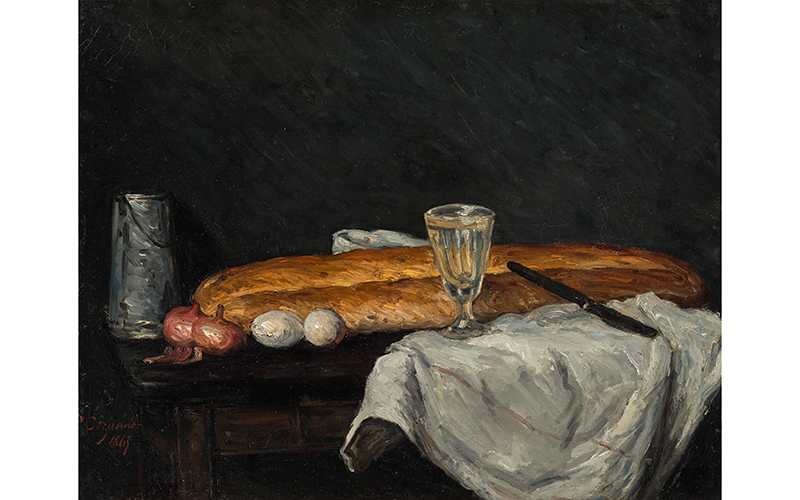- Events & Programs Home
- Calendar
- Accessibility
- Adults
-
Families & Teens
- Families & Teens Home
- 10x10 Teen Art Expo
- Art on the Rise
- Art Together: Art Making for Families with Children Ages 3–5
- Babies Sing with May Festival Minis
- Boy Scouts / Girl Scouts
- CAM Kids Day
- Family Storytime and Gallery Walk
- Family Studio: Art Making for Families with Children Ages 6–12
- Games in the Galleries
- Members-Only Baby Tours
- Public Baby Tours
- REC Reads
- Rosenthal Education Center (REC)
- Saturday Morning Art Class
- See Play Learn Kits
- Summer Camp
- Teen Fest: Zine and Comic Exchange
- Teachers
- Community Outreach
- Fundraisers
- Plan Your Own Event

- Events & Programs Home
- Calendar
- Accessibility
- Adults
-
Families & Teens
- Families & Teens Home
- 10x10 Teen Art Expo
- Art on the Rise
- Art Together: Art Making for Families with Children Ages 3–5
- Babies Sing with May Festival Minis
- Boy Scouts / Girl Scouts
- CAM Kids Day
- Family Storytime and Gallery Walk
- Family Studio: Art Making for Families with Children Ages 6–12
- Games in the Galleries
- Members-Only Baby Tours
- Public Baby Tours
- REC Reads
- Rosenthal Education Center (REC)
- Saturday Morning Art Class
- See Play Learn Kits
- Summer Camp
- Teen Fest: Zine and Comic Exchange
- Teachers
- Community Outreach
- Fundraisers
- Plan Your Own Event
Still Life with Bread and Eggs
Still Life with Bread and Eggs
- Home
- Plan Your Visit
- Art
-
Events & Programs
- Events & Programs Home
- Calendar
- Accessibility
- Adults
-
Families & Teens
- Families & Teens Home
- 10x10 Teen Art Expo
- Art on the Rise
- Art Together: Art Making for Families with Children Ages 3–5
- Babies Sing with May Festival Minis
- Boy Scouts / Girl Scouts
- CAM Kids Day
- Family Storytime and Gallery Walk
- Family Studio: Art Making for Families with Children Ages 6–12
- Games in the Galleries
- Members-Only Baby Tours
- Public Baby Tours
- REC Reads
- Rosenthal Education Center (REC)
- Saturday Morning Art Class
- See Play Learn Kits
- Summer Camp
- Teen Fest: Zine and Comic Exchange
- Teachers
- Community Outreach
- Fundraisers
- Plan Your Own Event
- Give & Join
- About
- Tickets
- Calendar
- Exhibitions
- Collections
- Blog
- Shop
- Art
- Exhibitions
- What, Me Worry? The Art and Humor of MAD Magazine
- Recall. Reframe. Respond. The Art of Paul Scott
- Rediscovered Treasures
- Special Features
- Upcoming Exhibitions
- Past Exhibitions
- Online Exhibitions
- Explore the Collection
- Provenance and Cultural Property
- Conservation
- Meet the Curators
- Digital Resources
- Art Bridges Cohort Program

Paul Cézanne (1839–1906), France, Still Life with Bread and Eggs, 1865, oil on canvas, 23 1/4 x 30 in. (59.1 x 76.2 cm), Cincinnati Art Museum; Gift of Mary E. Johnston, 1955.73
Audio Description
Still Life with Bread and Eggs is a two-and-a-half-foot wide oil painting on canvas, made in 1865 by the French artist Paul Cézanne, who lived from 1839 to 1906. It was a gift of Mary E. Johnston to the Cincinnati Art Museum, where its reference number is 1955.73.
Darkness surrounds a tabletop, the front corner of which is visible at the left side of the canvas. At left rests a pewter tankard behind two red onions. A long loaf of baguette, creased down the middle, runs horizontally across much of the table. The right half of the bread rests on a tablecloth, white with faint blue and red stripes, that is casually draped across the right half of the table. In front of the bread are two eggs at left, an empty glass in the middle, and a knife to the right balanced diagonally across the bread and tablecloth.
Label Copy
Still Life with Bread and Eggs is a two-and-a-half-foot wide oil painting on canvas, made in 1865 by the French artist Paul Cézanne, who lived from 1839 to 1906. It was a gift of Mary E. Johnston to the Cincinnati Art Museum, where its reference number is 1955.73.
Still Life with Bread and Eggs is perhaps the earliest still life masterpiece by Paul Cézanne, an artist renowned for this genre. It is one of a dozen dark and thickly textured paintings he made in the 1860s. Simplifying forms and roughly applying paint, Cézanne took aim at the traditional styles sanctioned by the art establishment.
“Objects never cease to live,” Cézanne told a friend some twenty years later, “these glasses, these plates, they converse among themselves.” In Still Life with Bread and Eggs, we already see such “conversations” taking place, drawing together the flickering forms of the twinned onions and eggs, painted with extraordinary assurance in broad, thick strokes of paint.
The paintings on view here demonstrate their artists’ mutual appreciation and influence. Cézanne likely saw Manet’s Fish (Still Life); we know that Manet saw and complimented Cézanne’s painting; it, in turn, was an important precedent for Pissarro’s grand Still Life.
Cincinnati, OH 45202
Toll Free: 1 (877) 472-4226
Museum Hours
Museum Shop
Terrace Café
Library
Cincinnati Art Museum is supported by the tens of thousands of people who give generously to the annual ArtsWave Campaign, the region's primary source for arts funding.

Free general admission to the Cincinnati Art Museum is made possible by a gift from the Rosenthal Family Foundation. Exhibition pricing may vary. Parking at the Cincinnati Art Museum is free.
Generous support for our extended Thursday hours is provided by Art Bridges Foundation’s Access for All program.

General operating support provided by:



